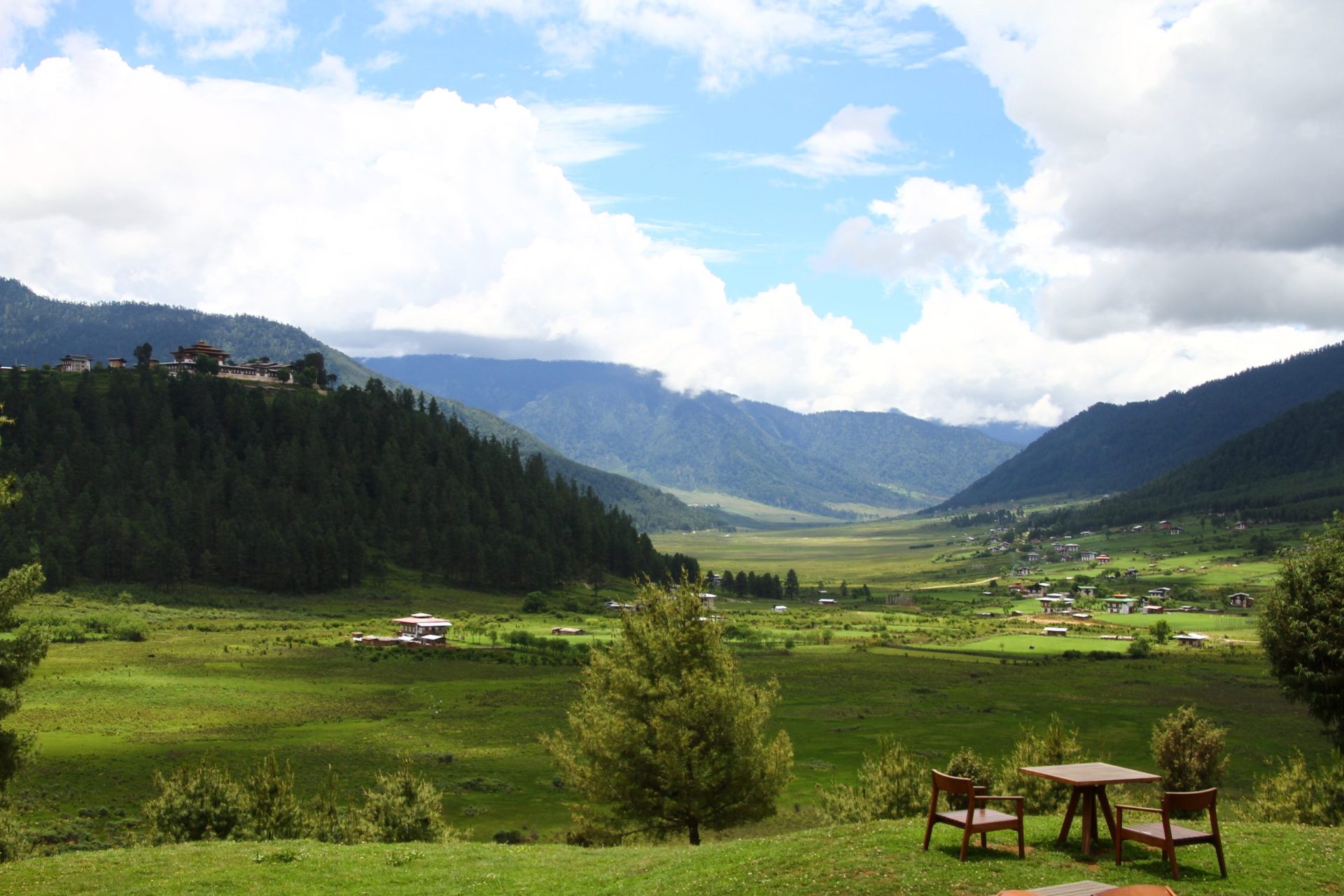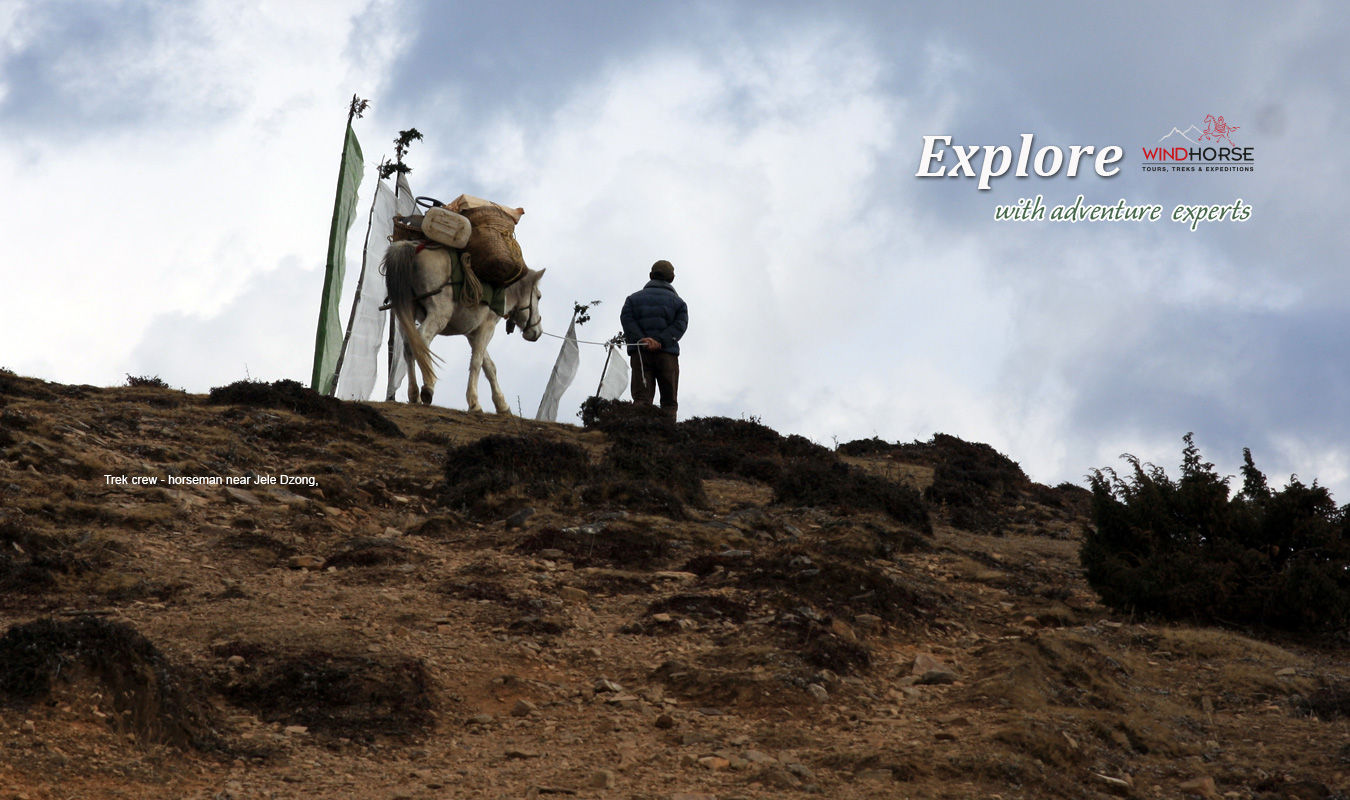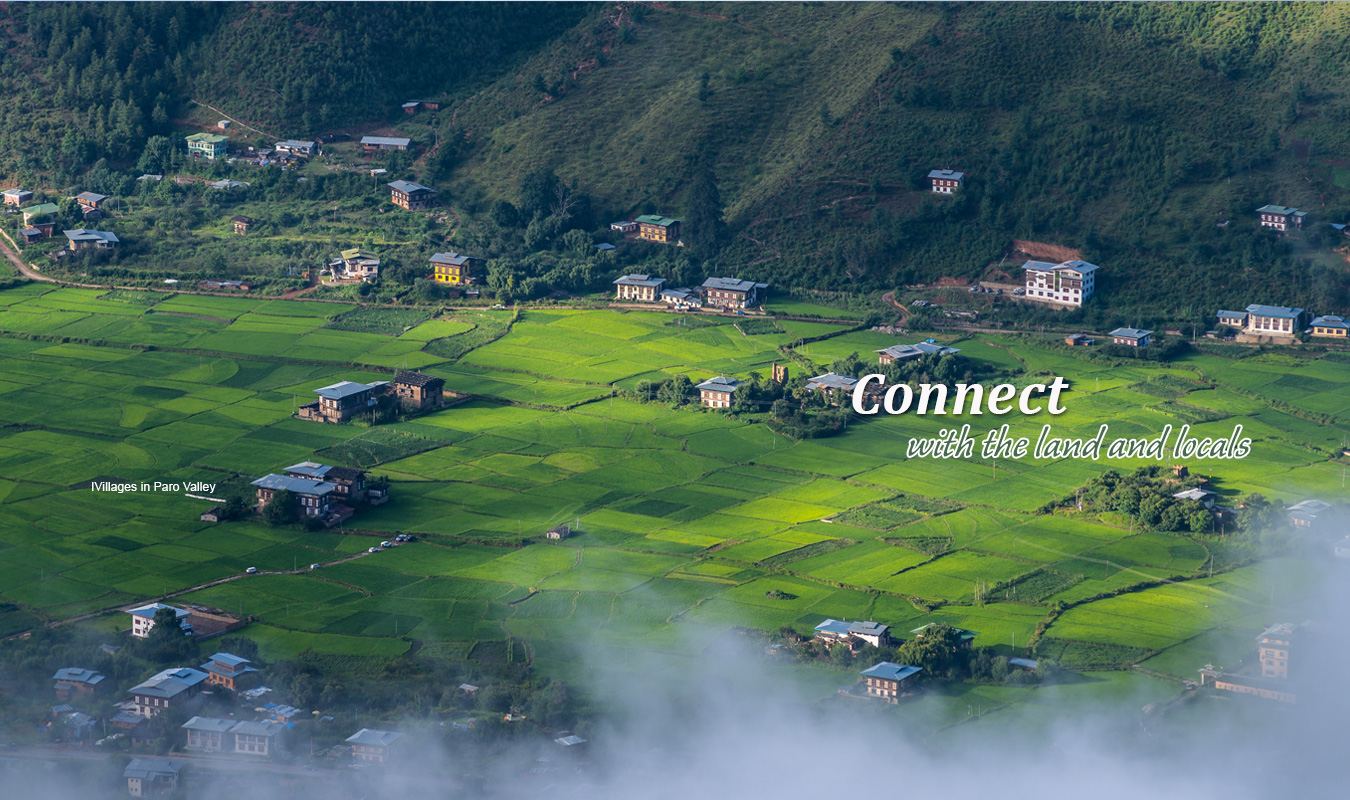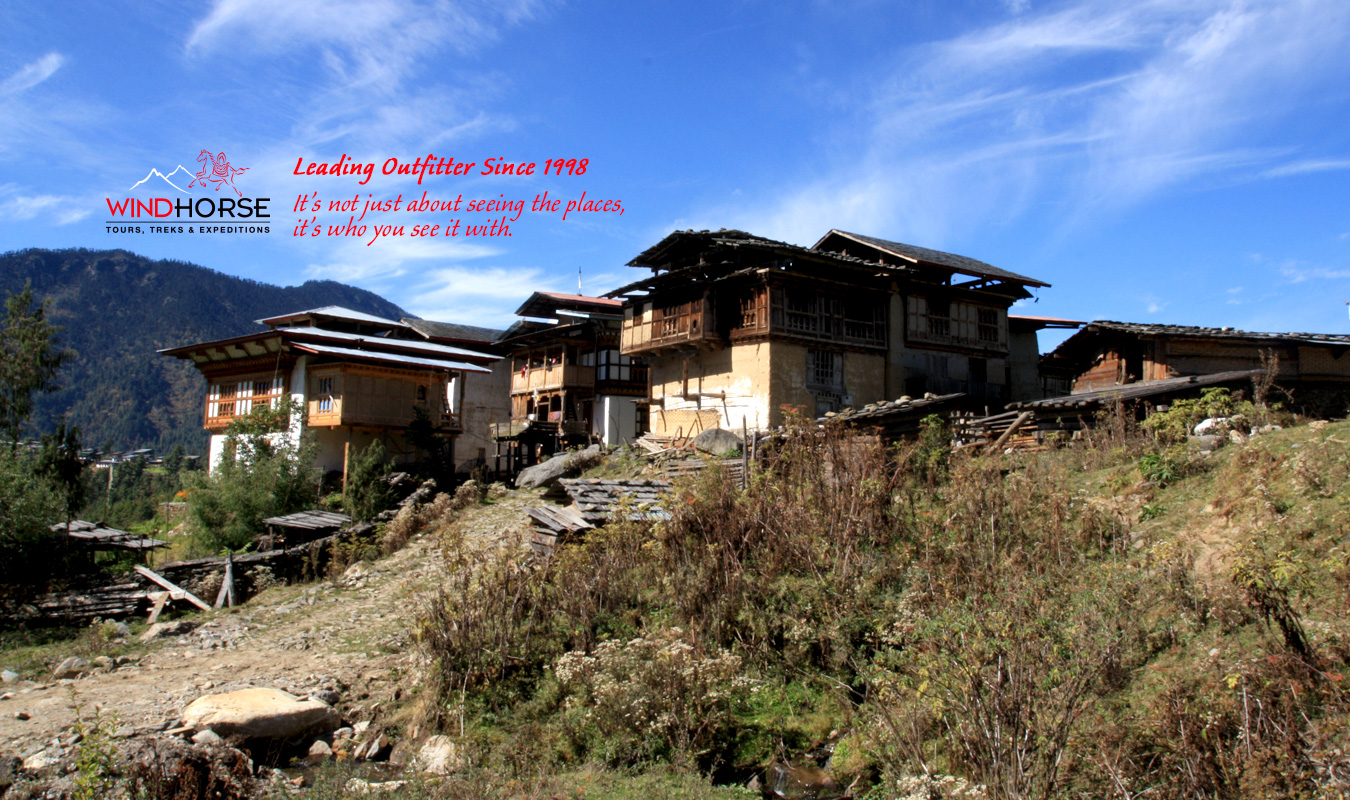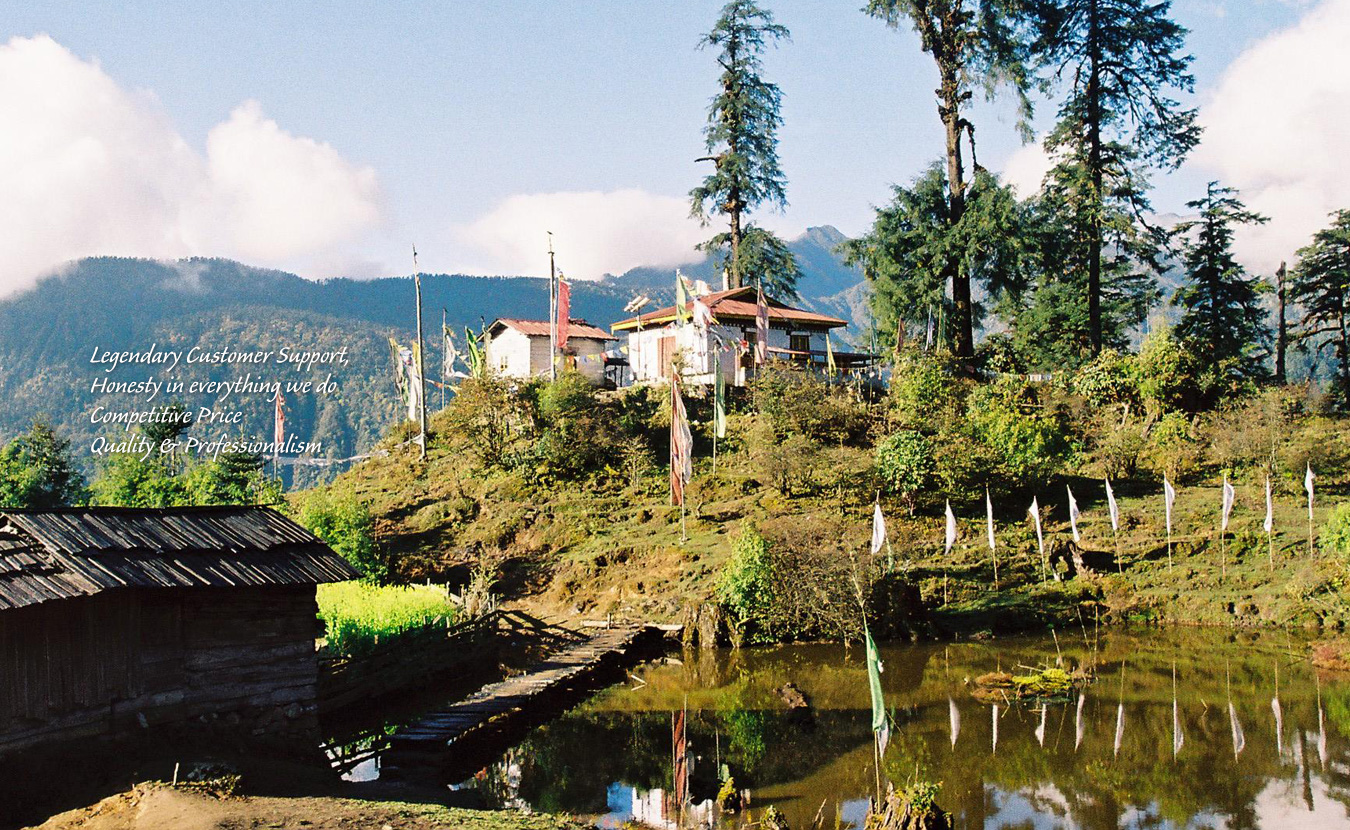
Landmark Tour of Bhutan


7 days
6 nights
GRADE Easy
Paro, Thimphu, Punakha, Wangduephodrang

Important remarks:
“”Explore the Paro, Thimphu, and Punakha valleys”
Takes you through important cultural sites, monuments, the country’s unique culture and tradition, its people, and villages
Day 2 Must fall on weekday as most sites will be closed on the weekends. Also some sites may close if its during government holiday.
Day 7 also has a site that is closed on govt. holidays and Sunday. The day must fall on a week day.
Zorig Chusum closed during Jan, Feb and Jul due to winter and summer vacations for the students
Day 01: Arrive Paro, Transfer to Thimphu Valley (1hr/54kms)
On the flight to Paro, if flying from Delhi and Kathmandu, a spectacular view of Mount Everest, Kanchenjunga and other famous Himalayan peaks, including the sacred Jhumolhari and Mount Jitchu Drake in Bhutan can be seen. The flight to international airport in Paro is most spectacular and thrilling as one approaches the tiny airstrip through the Bhutanese foothills and the landing.
On arrival in Paro, after completion of airport formalities, our representative will be there to receive you and escort to the vehicle. Drive to Thimphu, the capital city Bhutan and a burgeoning sprawling city with mix of tradition and modernity awaits. The quaint Thimphu city is the capital city of Bhutan also the seat of government. It is also home to Bhutan’s royal family, the civil service, and foreign missions with representation in Bhutan. Many internationally funded development projects headquarters are also located here.
Rest of the day at leisure or one can take a stroll through this lively town.
In the evening, if time permits visit the iconic Trashicho Dzong/fortress which houses the throne room of the King and various government offices, besides being the summer residence of the Chief Abbot and the central monk body. One can watch the hoisting of the National Flag if the visit falls on a working weekday.
Overnight at Hotel
Day 02: Thimphu Valley Exploration (2320m)
Today will be full day sightseeing in Thimphu valley and includes visit to the iconic landmark below:
* Buddha Dordenma statue sitting atop over a hill overlooking Thimphu entrance valley. The Statue of Sakyamuni Buddha is one of the tallest in Asia (51.5 m ). The site of Buddha Dordenma provides breath-taking panoramic view of the capital town.
*National Memorial Chorten– the iconic chorten ‘Seat of Faith’ was built in the memory of Bhutan’s third king, His Majesty Jigme Dorji Wangchuck, dedicated to World Peace in 1974. The chorten is large white structure crowned with a golden spire. Located in the centre of Thimphu city, most elderly Bhutanese will be circumambulating the Chorten throughout the day. It is a unique astounding Buddhist architecture and artwork emblemed with gorgeous paintings and intricate sculptures.
* Folk Heritage and Textile Museums: These museums, were opened in 2001, provides detail insights into Bhutanese culture and way of life. Closed on Sat / Sun / Govt. Holidays
* Institute for ZorigChusum: or the Painting School as commonly referred offers a six-year course in the Bhutan’s 13 traditional arts and crafts. On a visit one can see students learning the various skills taught at the school. Closed on Sun / Govt. Holidays / Sat – 10am-12pm
* Handicrafts Emporium: This is government owned enterprise display huge arrays of intricately hand-woven textiles and craft products. Many collections of books are also available on Bhutan, Buddhism and Himalayan culture.
* National Library: Has an astounding collection of Buddhist texts and manuscripts, which dates several hundred years, including modern academic books on Himalayan culture and religion. Closed on Sat / Sun / Govt. Holidays
In the evening, take a stroll along the town’s main street.
Overnight at Hotel
Day 3: Transfer to Punakha (1300m) & Tour of Punakha (3hrs/76kms)
After early breakfast, head to Punakha through Dochu-la pass (3,088m/10,130ft). On a clear sky, stop here admire the spectacular ranges from (left to right): Masagang (7,158m), Tsendegang (6,960m), Terigang (7,060m), Jejegangphugang (7,158m), Kangphugang (7,170m), Zongaphugang (7,060m) a table mountain that dominates the isolated region of Lunana, and finally, Gangkar Puensum, the highest peak in Bhutan at 7,497m and one can even see the Gasa Dzong as a white dot in the horizon. On the same spot, visit the beautiful 108 stupas constructed by Her Majesty Ashi Dorji Wangmo for the security and wellbeing of His Majesty the King of Bhutan.
Travel continue to Punakha, the old capital of Bhutan which serve as the winter residence of the central monk body and the Je Khenpo (Chief Abbot). On the way, visit to the Chimi Lhakhang; the auspicious fertility monastery constructed in 1499 dedicated to the “Divine Madman”, Lam Drukpa Kinley, who was an eccentric monk from the 16th century tales abound on his flamboyant unique teachings through amusements.
After the short hike, drive towards Khuruthang where you will pass the Punthsho Pelri Palace and other places of the royal family finally visit the impressive Punakha Dzong, located on the island of the Pho – Chu (male) river and the Mochu (female) river. The Dzong constructed in 1637 by Shabdrung Ngawang Namgyal to serve as the religious and administrative center of the region. Over the centuries, many calamities such as four catastrophic fires and an earthquake befell on the Dzong. Today the Dzong is fully restored by the present monarchs. The Dzong is opened to visitors during the famous Punakha festival held in early spring and in the summer months, after the monk body has returned to Thimphu.
Rest of the day at leisure.
Overnight at Hotel
Day 4: Punakha Valley Tour and Wangduephodrang
Today after breakfast visit the longest suspension bridge in Punakha the and after that take a short Hike to Khamsum Yuelley Namgyel Temple located at the upper Punakha Valley.
Later drive to Wangduephodrang small town located on the highway, before entering central Bhutan. Visit to the impressive Wangduephodrang Dzong overlooking a river junction.
In the 17th century, Wangdue’s critical role in unification of the western, central and southern regions of the country has historical significance. Also visit the local market nearby. After lunch drive to Thimphu and stop briefly at Dochula to take photoshoot or go to washroom. Visit Semtokha Dzong on the way to Thimphu city, the fortress was built in 1627, also happens to be the oldest Dzong in Bhutan. It now houses the Institute for Language and Cultural Studies. Evening take stroll at the Handicraft Bazaar. Overnight at the hotel in Thimphu.
Day 5: Transfer to Paro(4hrs/130kms)
After breakfast, continue the drive towards Paro, upon reaching, check into the hotel. Visit Kyichu temple built by the Tibetan King Songsten Gampo in the 7th century as part of 108 temples. With the purpose to overcome the giant demon which lay the body affecting whole of Tibet and the Himalayas and was preventing the spread of Buddhism. The temple marks the introduction of Buddhism in Bhutan.
Proceed to Ta Dzong, once a watchtower and now the National Museum built to defend Rinpung Dzong during the inter-valley wars of the 17th century, Ta Dzong was converted to Bhutan’s National Museum in 1968. Afterwards, walk down a hillside trail to visit Rinpung Dzong with fascinating long history. The museum has ancient Bhutanese art and artefacts, weapons, coins, stamps and a small natural history collection. Then walk below on the hillside trail to towards Rinpung Dzong (Paro Dzong) situated at a commanding height overlooking Paro valley, built in 1645 by Shabdrung Ngawang Namgyal to defend against Tibetan invaders. The Dzong is currently being used as administration centre and Paro’s monk body.
Leisure time walk to small town of Paro.
Places to visit:
• Punakha- Paro Highway
• Kyichu Temple
• Paro Rinpung dzong
• National Museum (Ta-dzong)
• Paro town
Overnight at Hotel
Day 6: Taktsang Hike
After our breakfast, drive to the base of trekking point, from here you will hike to Taktsang Monastery also known as Tiger Nest Temple, which is built in 1962 around a cave in which Guru Rimpoche (also known as Guru Padmasambhava) meditated. The eighth-century old monastery is perched on a sheer drop rock cliff which clings at 900m above the valley floor. It is believed that Guru Rinpoche (Guru Padmasambhava) flew to this location from Khenpajong, Tibet on the back of a tigress and subdued a demon. He then meditated in one of the caves here and emerged in eight incarnated forms (manifestations) to bless the place. Subsequently, the place came to be known as the “Tiger’s Nest”. Guru Padmasambhava is known for introducing Buddhism to Bhutan.
Tiger Nest Temple is considered, one of the must-visit places around the world before one die. The hike takes almost 2 hours, uphill at 30 to 40 degrees inclined for an average trekker and may even take full day which will depend upon one’s own pace. The first of half of the hike reaches you to the cafeteria may seems never ending however hereon due to magical aura of the structure at your close sight, you feel energized to push further. The effort is worth as you reach the feet of the Tiger Nest, with its astounding scenic beauty, one feel extreme jubilation and fulfilment like never before. And on the way back, one can either run down or take a brisk walk. After the trek, if you are totally exhausted one can either take a perfect hot stone bath with a sumptuous dinner in a hotel or at farmhouse. In the evening relax or take a stroll in the town.
Overnight at Hotel.
Day 7: Depart Paro
Early breakfast in the hotel, then drive to the airport for flight to onward destination.
Tour program ends.
Do note that the itinerary may change due to reasons such as seasons, national holidays, and special events and unforeseen situations. The right to alter the itinerary is maintained by us as the itinerary are planned in advance.
What’s Not Included In This Tour.
• Air fare
• Travel and health Insurance (All medical facilities when in Bhutan is free )
• Laundry, telephone, mobile, fax and Internet bills (Hotels in Bhutan provide free wifi facilities)
• Tips for guide and driver
• Alcohol, beverages in resorts.
• Shopping and Entertainment






